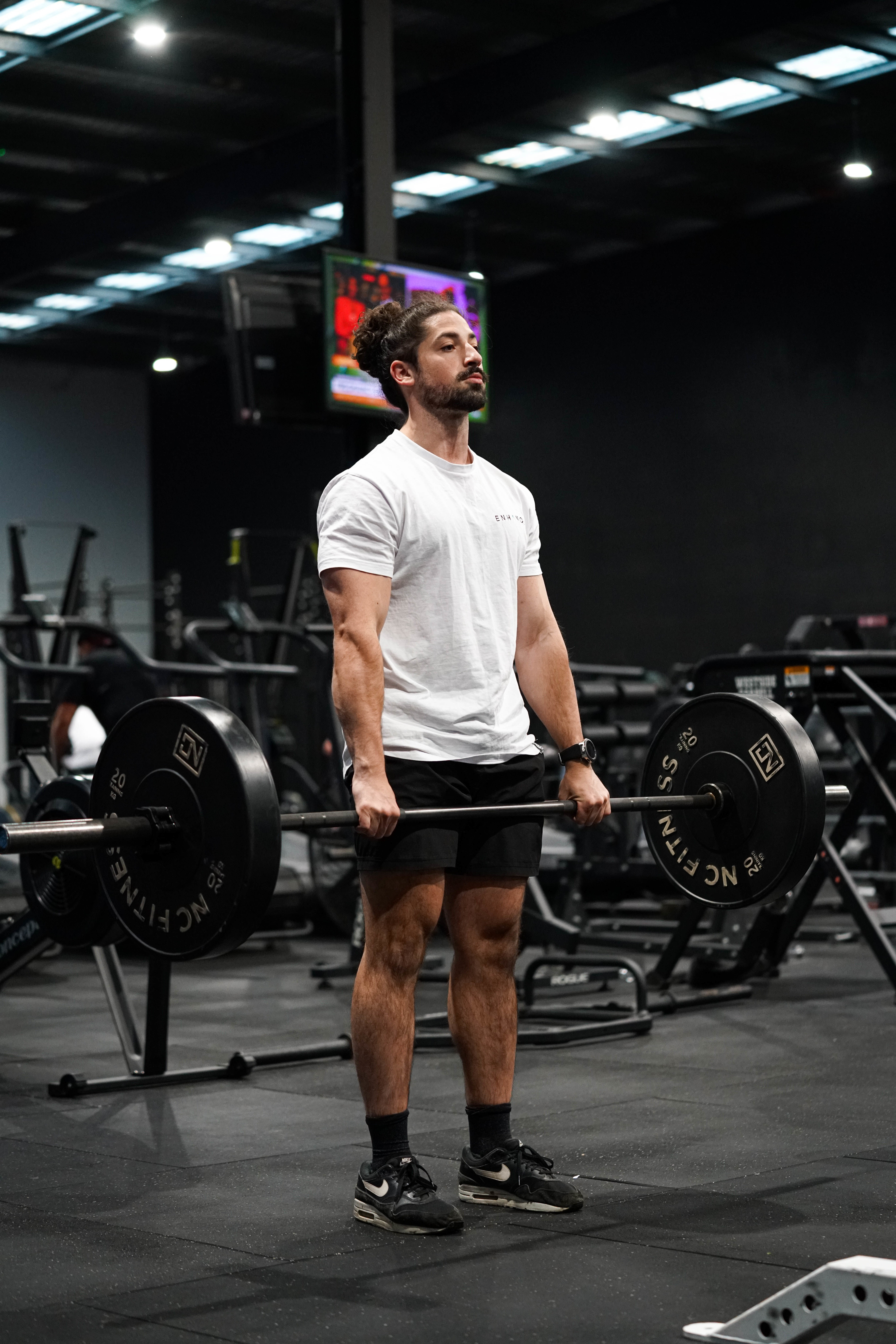So we've covered how detraining impacts strength gains, but what about muscle size, or the process of hypertrophy...
A single week of no training in swimmers and 4 weeks of no training in triathletes, cyclists and runners saw a 20% drop in glycogen stores. These differences may have a small effect on muscle size in the short term. Lower glycogen stores may mean less perceived muscle size as when glycogen is stored it also pulls in water along with it. So we may lose some of that feeling of “fullness” when this happens. While we do see quick drop offs, we also tend to see that there is a rapid return to control values in a number of studies.
When it comes to direct changes to the musculature itself, most of the research suggests it may take around 2-3 weeks of detraining.
With beginners, we can go back to the Ogasawara study to demonstrate that even with 3 week detraining periods, muscle CSA (cross sectional area) was similar in the long term between groups. Shown below are the cross sectional area changes for the triceps and pecs major respectively:

In more experienced lifters, we see similar figures. Both Mujika and Hwang studies showed two weeks of detraining after periods of resistance training have non-significant effects on muscle size. What Mujika & Padilla (2001) also showed was that in 2 weeks of training cessation, muscle fibre distribution i.e. the ratio between fast twitch and slow twitch, didn’t change in strength athletes.
Fisher et al (2013) also confirms that short periods of detraining i.e. 3 weeks, does not incur significant muscle atrophy.
When greater periods of detraining are present i.e. >4 weeks, we not only see changes to the CSA of muscle, but also greater changes in muscle fibre distribution, which may be important as it can affect overall force production.
How do we limit muscle loss during times away from the gym?
While putting on muscle can be difficult, as mentioned above we don’t really need an excessive amount of training volume to maintain training adaptations.
Keep in mind that this doesn’t mean that training becomes a walk in the park. The general consensus across the literature is that training intensity and our proximity to failure are the more critical factors when it comes to increasing, or at the very least maintaining muscle mass. The following excerpt wraps it up nicely:
“Maintaining training intensity seems to be the key factor for the retention of training-induced physiological and performance adaptations, whereas training volume can be reduced to a great extent without falling into detraining. This can reach 60-90% of the previous weekly volume, depending on the duration of the reduced training volume in highly trained and recently trained individuals”
– Mujika & Padilla (2000).
Of course I think it goes without saying that there are other factors involved in how well you’re able to grow/maintain muscle mass. Protein consumption, genetics, volume and fatigue management (and more) will all have roles to play.
So there you have it, it's harder to grow muscle, but to maintain it you just need to "rev the engine" with high intensity training at least once a week. More questions? Reach out! If you would like to book an appointment with me, click the link below:
Can we maintain muscle mass with lower loads? More to come...
Dave B


